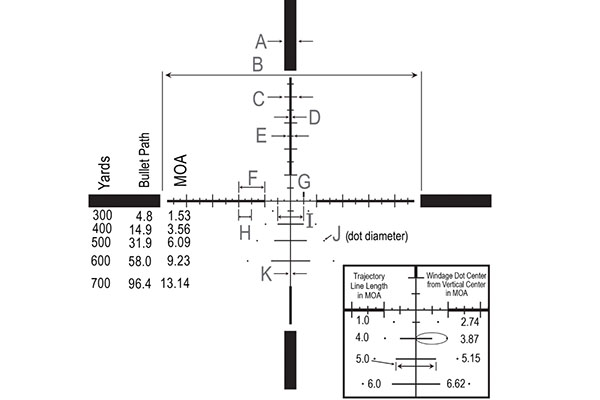
Last Updated on
By William Brantley
In this article we’re going to take a look at five of the top reticles that you should choose from to put on that brand new rifle just begging for a nice piece of glass.
One question that we’ll run into is what level of precision are we really looking for? All shooters are different and have different levels of experience, so there will definitely be some disagreement as to which type of reticle is the best all-around choice. At this point we could easily get sucked into the argument of Mils vs. MOA, but we’ll save that for another article since it could take a while!
We are looking for something that really can be applicable to any type of rifle shooting, whether it’s long range competition, taking that massive ten-point buck you’ve been chasing, or just the occasional trip to the range for recreational fun.
Leupold CMR2
Leupold certainly has some spectacular reticles, but among my favorites is the CMR2. Leupold sums up the features of this reticle nicely:
“The hash marks on the horizontal stadia can be used for leading targets moving at 5, 10 and 15 mph respectively. The tic marks on the vertical stadia serve a dual purpose, allowing the user to quickly estimate the distance to 18″ targets while serving as precise holdover points for targets between 300 and 900 meters.”
The convenience factor of such a reticle is incredible when you look at the level of performance achievable with such a simple interface.
However, there is one major drawback that comes to mind. The CMR2 was designed to be most effective with the military M855 5.56mm NATO ammunition, which uses a 62 grain bullet. While this is a great cartridge for certain applications, it is not the best solution for every situation or every shooter.
If you’re not planning on shooting a cartridge that matches the ballistic profile of M855, you’re probably better off choosing another reticle.
Leupold Varmint Hunters
The Varmint Hunter’s reticle from Leupold is another great one that has fewer things going on but is still very practical and easy to use.
One great thing about it is the BDC (Bullet Drop Compensated) hash marks make it quick and precise to make shots at extended ranges, while there are additional dots for wind holdoffs at 10 and 20 mph.
The fine lines on the cross hair make for very precise aiming points, even on small targets. As the name indicates, this reticle is a good one to use when varmint hunting, but it can obviously be used in a number of other ways.
You can get this from Leupold in either an illuminated or non-illuminated reticle based on personal preference and your intended use.
This reticle is one of the simpler yet still feature rich options we are looking at in this article. Some will be more adaptable for long range precision shooting, while this reticle is more ideal for hunting or target practice because it is cleaner and more similar to a duplex.
Burris Ballistic Plex E1 FFP Varmint
Burris has some very nice options when it comes to reticles, and they seem to have a good mix relevant to both hunting and tactical applications. When it comes to a practical reticle, the Ballistic Plex E1 FFP Varmint is probably my favorite. I also think it is one of the under-utilized options that Burris has available.
The versatility all in this one reticle is astounding, quite frankly. It has BDC hashes out to 700 yards, 10 mph wind holdoffs, MOA tick marks on the horizontal and upper portion of the cross hair, and best for last – it is a FFP(Front Focal Plane) reticle.
These last two features are a great combination, and one that neither one of the previously mentioned reticles have. The Minute Of Angle hashes are for ranging or measuring sizes of targets, which is extremely useful for long range target shooting or even long range hunting. Using the MOA formulas for measurement you can easily calculate a firing solution if you don’t have a rangefinder or don’t want to waste ammo taking pot shots till you finally get your hold right.
The FFP reticle, also sometimes referred to as First Focal Plane, is something that many people prefer nowadays when shooting for precision, based on the fact that the reticle grows and shrinks relative to magnification, while staying the same size in relation to the target. This can be very helpful when you may want to use your scope at different magnification settings, and truly is the only way to go when ranging or measuring targets.
With most hunting scopes being in Second Focal Plane, this one is a somewhat unique offering that will benefit many different types of shooters.
Mil Dot/Mil Dash
To Mil or not to Mil… that is the question. It just wouldn’t be right to write an article about reticles and not include this one.
The Mil Dot reticle is truly one of, if not the most used and preferred reticles across the United States, and probably across the world. Since the Mil measurement system provides the ability to range targets based on size and mathematical formula, it is the preferred reticle by most military and law enforcement agencies.
While this reticle has been around for decades, there have been considerable changes and improvements to the Mil-based reticle offerings on the market today. You can find reticles with copious amounts of windage and elevation holds, similar to HORUS designs, or you can keep it simple and go with the age old standard Mil Dot just like snipers have used ever since its invention in the late 1970’s.
While the Mil system is an excellent tool and is proven in the world of long range precision shooting, it does require slightly more knowledge of your weapon system. In order to generate an accurate firing solution, you must know your DOPE’s (Data On Previous Engagement) and know your target ranges. DOPE’s can be very simple if you use a ballistic calculation app, but it requires input of every detail about your rifle, the ammunition, the weather, etc. When going for precision this is absolutely necessary, and you will definitely want a Mil or MOA based reticle.
A BDC reticle simply does not have the same capacity for precision when using holds to shoot, even though it is a simpler and less involved way of shooting.
Simply put, decide what type of shooting you want to do, and then make your choice based on which reticle meets your needs.
Bushnell BTR2
This reticle offering from Bushnell is only available in their Elite Tactical line, specifically only in their lower magnification scopes. I chose this one because it is a very precision based CQB style reticle, or one that allows quick and easy target transition when in close quarters.
This is another scope that is more ideal for a certain type of rifle or application, but it is still a very versatile reticle. It also is available in First Focal Plane, which makes the reticle very small for a large and unobstructed field of view while on the low magnification, but still offers detail and a well thought out reticle for those longer range shots. Another unique feature is the 10 Mils of elevation for holds on the vertical portion of the cross hair. There are also hash marks on the horizontal legs of the reticle that Bushnell says are for windage holds or for ranging 10” targets out to 800 meters. This is a pretty useful feature, and is especially nice to use with the First Focal Plane. The center dot is pretty fine, almost too fine if using at the minimum power like a red dot, but it comes in handy when you stretch it out a little farther or need some precision. The horseshoe shaped illuminated portion really helps on minimum power for those fast follow shots if you’re shooting 3-Gun competitions or something that requires speed.
One feature that sets it apart from many of the other similar scope reticles on the market is that in addition to the 11 brightness settings, you have 2 night vision compatible settings. While not completely necessary, this is the only riflescope that I can think of that offers NV compatible brightness modes. All things considered, this reticle is one of my top choices for a low power AR-15 scope that I could use in just about any scenario. This is one that I may be looking to add to my collection soon.
Application is Everything
We’ve taken some time to look at some really extraordinary reticles from a few different manufacturers, and we’ve learned some really neat things in the meantime, but what is the main point here? I wanted to show a few options that your everyday shooter could look at for making the decision on which scope to go with no matter what the purpose.
Some reticles mentioned here have certain strengths, but they may have weaknesses in areas where other reticles may be stronger. Generally speaking, BDC reticles are great for hunting or plinking, but they are not nearly as precise because they are typically meant to be compatible with a few different calibers. But what happens when you change ammunition? Ballistic coefficient, bullet weight, velocity, and a number of other things can easily affect the accuracy of the BDC reticle on your rifle even within the same caliber! That’s where the personal preference and application come in.
If you are shooting 1000 yard competitions like F Class or Benchrest, you are probably not going to go with a BDC reticle. You would lean more towards something with a Mil or MOA based reticle because you can dial or hold and it’s all based on a mathematical formula which you can master.
Hopefully this article has been helpful and will be influential in deciding which reticle is right for you. It could take a lot more time and many more words to explain the intricacies of systems like Mils and MOA and look into the vast array of those types of reticles, but we’ll save that for another article, and again, preference is everything.

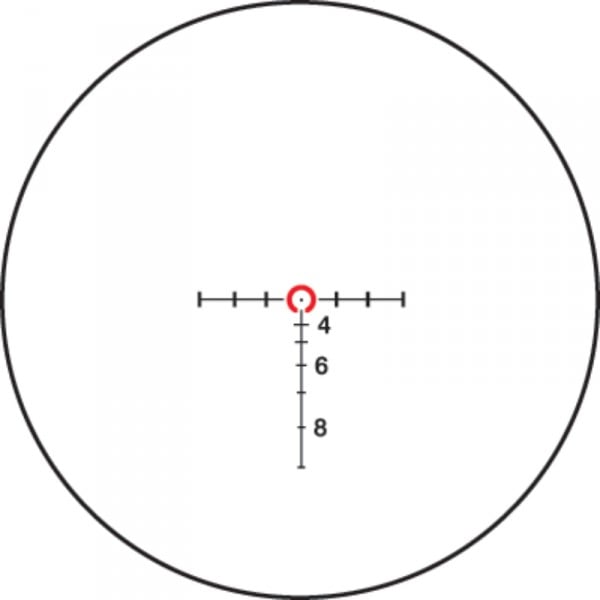
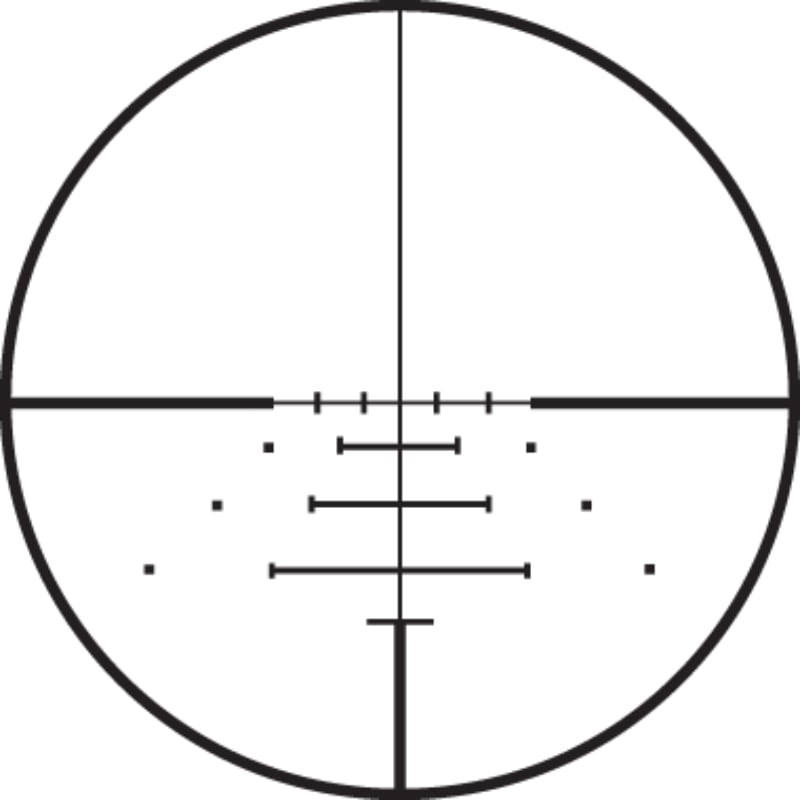
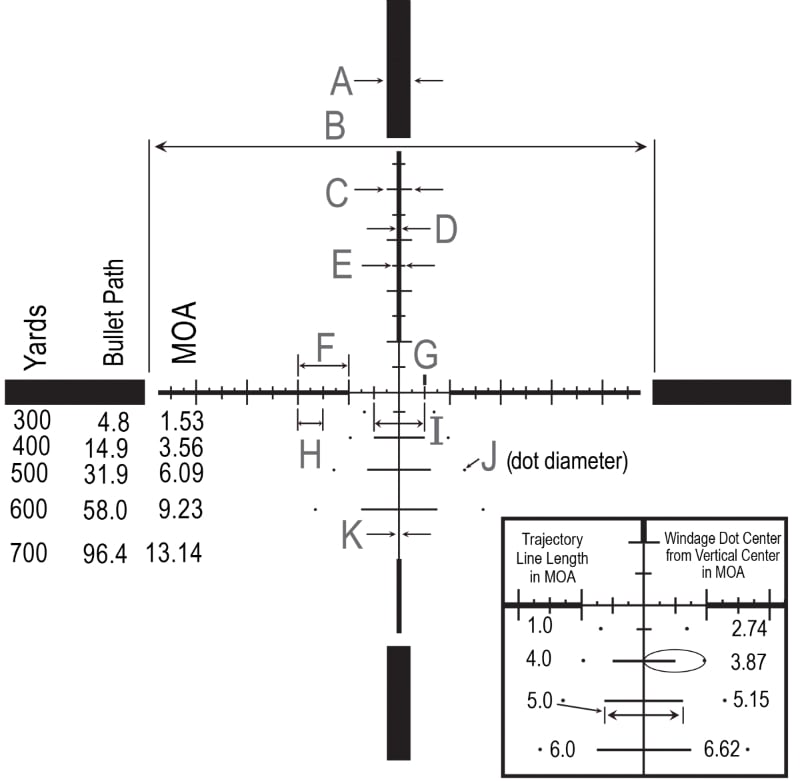

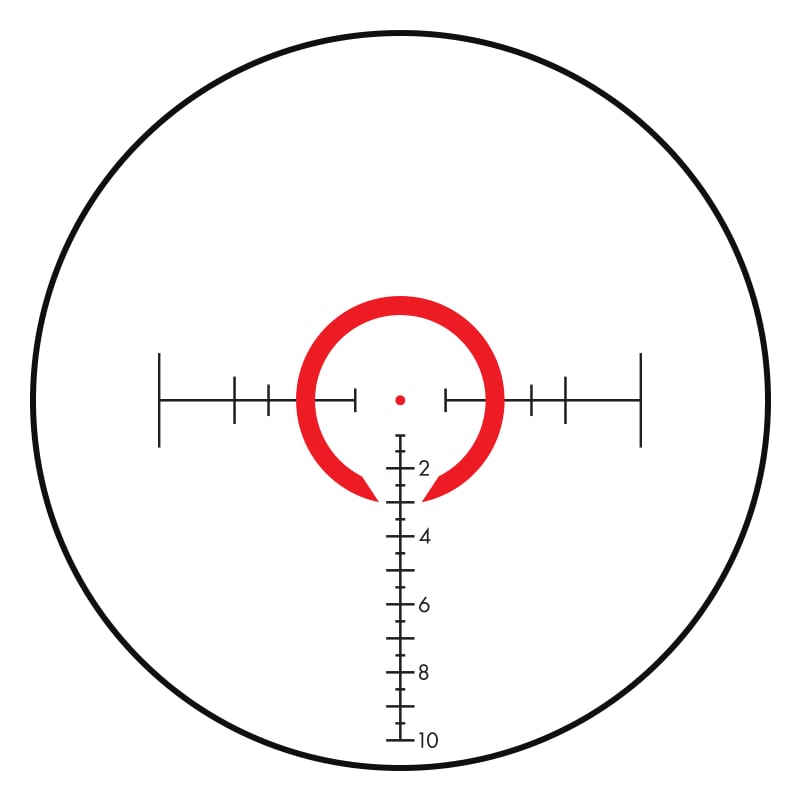



Leave a Reply